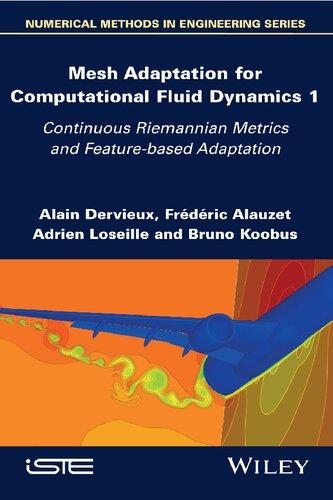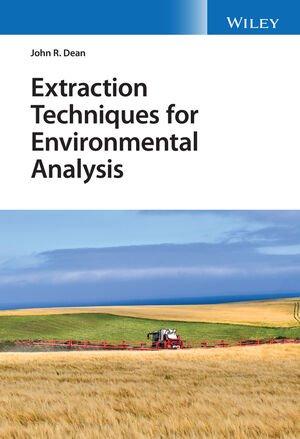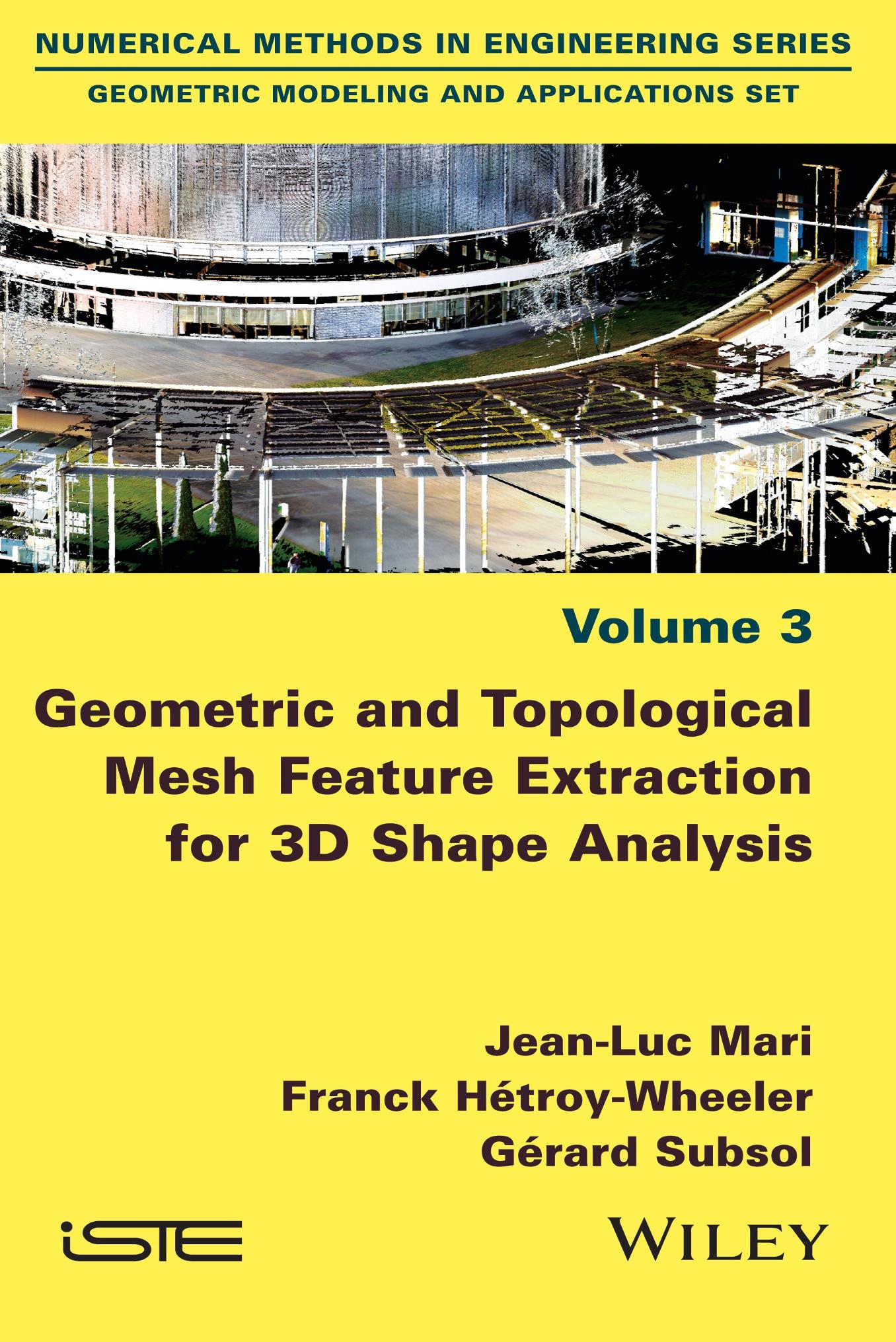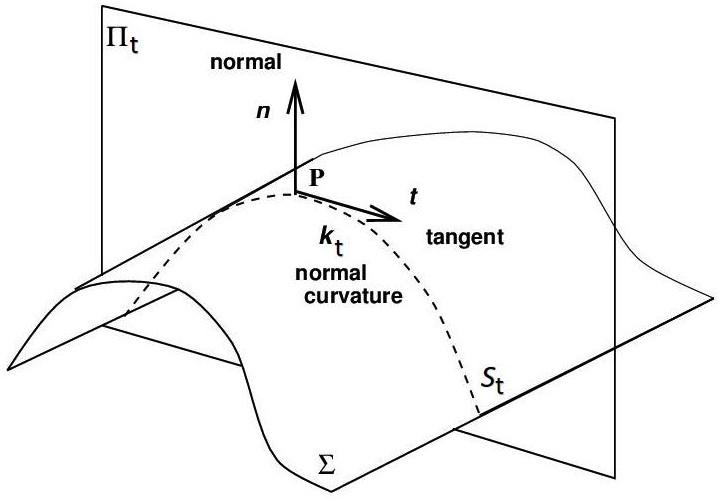GeometricandTopologicalMeshFeatureExtraction for3DShapeAnalysisHetroy-Wheeler
https://ebookmass.com/product/geometric-and-topologicalmesh-feature-extraction-for-3d-shape-analysis-hetroywheeler/
Instant digital products (PDF, ePub, MOBI) ready for you
Download now and discover formats that fit your needs...
Feature extraction and image processing for computer vision Fourth Edition Aguado
https://ebookmass.com/product/feature-extraction-and-image-processingfor-computer-vision-fourth-edition-aguado/
ebookmass.com
Mesh Adaptation for Computational Fluid Dynamics 1: Continuous Riemannian Metrics and Feature-based Adaptation Alain Dervieux
https://ebookmass.com/product/mesh-adaptation-for-computational-fluiddynamics-1-continuous-riemannian-metrics-and-feature-based-adaptationalain-dervieux/
ebookmass.com
Extraction Techniques for Environmental Analysis John R. Dean
https://ebookmass.com/product/extraction-techniques-for-environmentalanalysis-john-r-dean/
ebookmass.com
The Oxford Handbook of Language Attrition (Oxford Handbooks) Monika S. Schmid (Editor)
https://ebookmass.com/product/the-oxford-handbook-of-languageattrition-oxford-handbooks-monika-s-schmid-editor/
ebookmass.com
Kiss of Enchantment (The Darkfire Chronicles Book 1)
Deborah Cooke
https://ebookmass.com/product/kiss-of-enchantment-the-darkfirechronicles-book-1-deborah-cooke/
ebookmass.com
Socialism Goes Global: The Soviet Union and Eastern Europe in the Age of Decolonisation James Mark
https://ebookmass.com/product/socialism-goes-global-the-soviet-unionand-eastern-europe-in-the-age-of-decolonisation-james-mark/
ebookmass.com
Pornography: A Philosophical Introduction Mari Mikkola
https://ebookmass.com/product/pornography-a-philosophicalintroduction-mari-mikkola/
ebookmass.com
Handbook of Banana Production, Postharvest Science, Processing Technology, and Nutrition Jasim Ahmed
https://ebookmass.com/product/handbook-of-banana-productionpostharvest-science-processing-technology-and-nutrition-jasim-ahmed/
ebookmass.com
Windows 11 for Seniors For Dummies 1st Edition Curt Simmons
https://ebookmass.com/product/windows-11-for-seniors-for-dummies-1stedition-curt-simmons/
ebookmass.com
https://ebookmass.com/product/built-to-innovate-essential-practicesto-wire-innovation-into-your-companys-dna-ben-m-bensaou/
ebookmass.com
Geometric and Topological Mesh Feature Extraction for 3D Shape Analysis
Jean-Luc Mari
Franck Hétroy-Wheeler
Gérard Subsol
First published 2019 in Great Britain and the United States by ISTE Ltd and John Wiley & Sons, Inc.
Apart from any fair dealing for the purposes of research or private study, or criticism or review, as permitted under the Copyright, Designs and Patents Act 1988, this publication may only be reproduced, stored or transmitted, in any form or by any means, with the prior permission in writing of the publishers, or in the case of reprographic reproduction in accordance with the terms and licenses issued by the CLA. Enquiries concerning reproduction outside these terms should be sent to the publishers at the undermentioned address:
ISTE Ltd
John Wiley & Sons, Inc.
27-37 St George’s Road 111 River Street London SW19 4EU Hoboken, NJ 07030
UK USA
www.iste.co.uk
www.wiley.com
© ISTE Ltd 2019
The rights of Jean-Luc Mari, Franck Hétroy-Wheeler and Gérard Subsol to be identified as the authors of this work have been asserted by them in accordance with the Copyright, Designs and Patents Act 1988.
Library of Congress Control Number: 2019946683
British Library Cataloguing-in-Publication Data
A CIP record for this book is available from the British Library
ISBN 978-1-78630-041-6
1.3.7.Tensorofcurvature:Taubin’sformula
1.3.8.Tensorofcurvaturebasedonthenormalcycle theory
1.3.9.Integralestimators
1.3.10.Processingunstructured3Dpointclouds
1.3.11.Discussionofthemethods
1.4.Featurelineextraction
1.5.1.Meshsegmentation
1.5.2.Shapedescriptionbasedongraphs
2.1.Mathematicalbackground
2.2.1.Connectedcomponentsandgenus
2.2.2.Homologygroups
2.3.Combininggeometricandtopologicalfeatures
2.3.1.Persistenthomology
2.3.2.ReebgraphandMorse–Smalecomplex
2.3.3.Homologygenerators
3.1.Introduction
3.2.Medicine:linesofcurvatureforpolypdetectioninvirtual colonoscopy
3.3.Paleo-anthropology:crest/ridgelinesforshapeanalysisof humanfossils
3.4.Geology:extractionoffracturelinesonvirtualoutcrops
3.5.Planetaryscience:detectionoffeaturelinesfortheextraction ofimpactcratersonasteroidsandrockyplanets
3.6.Botany:persistenthomologytorecoverthebranching structureofplants
Preface
Three-dimensionalsurfacemeshes,composedofcollectionsofplanar polygons,arethemostcommondiscreterepresentationofthesurfaceofa virtualshape.These3Dsurfacemeshesneedtobeinspectedinorderto understandorevaluatetheiroverallstructureorsomedetails.Thiscanbe donebyextractingrelevantgeometricortopologicalfeatures.Suchshape characteristicscansimplifythewaytheobjectislookedat,canhelp recognitionandcandescribeandcategorizeitaccordingtospecificcriteria.
Shapecharacteristicscanbedefinedinmanyways.Thisbooktakesthe pointofviewofdiscretemathematics,whichaimstoproposediscrete counterpartstoconceptsmathematicallydefinedincontinuousterms.More specifically,inthisbook,wereviewhowstandardgeometricandtopological notionsofsurfacescanbedefinedandcomputedfora3Dsurfacemesh,as wellastheiruseforshapeanalysis.Inparticular,recentmethodsare describedtoextractfeaturelineshavingameaningrelatedtoeithergeometry ortopology.Differentialestimatorssuchasdiscreteprincipalcurvaturesare detailedastheyplayacriticalroleinthecomputationofsalientstructures.An emphasisisthenplacedontopologysincetheglobalstructureandthe connectivityoffeaturesplayanimportantroleintheunderstandingofa shape.Severalapplicationsarefinallydeveloped,showingthateachofthem needsspecificadjustmentstogenericapproaches.Theseapplicationsare relatedtomedicine,geology,botanyandothersciences.
Focusingonshapefeatures,thetopicofthisbookisnarrowerbutmore detailedthanothershapeanalysisbooks,whichdonot,oronlybriefly,refer tofeaturedefinitionandcomputation.Itisintendednotonlyforstudents,
xGeometricandTopologicalMeshFeatureExtractionfor3DShapeAnalysis
researchersandengineersincomputerscienceandshapeanalysis,butalso numericalgeologists,anthropologists,biologistsandotherscientistslooking forpracticalsolutionstotheirshapeanalysis,understandingorrecognition problems.Wehopethatourbookwillbeausefulreviewofexistingworkfor allofthem.
Finally,wewouldliketothankMarcDanielforgivingustheopportunity towritethisbookandAldoGonzalez-Lorenzoforhisreadingofchapter2and forhisconstructiveremarks.
FranckH ÉTROY-W HEELER GérardS UBSOL August2019
Jean-LucM ARI
Introduction
I.1.Context:3Dshapeanalysis
Shapes,whetherfromthenaturalworldormanufactured,aremoreand moreoftendigitizedforvisualizationormeasurementpurposes,among others.Thisprocessgenerallyresultsin3Dsurfacemeshes,whichare composedofcollectionsofplanarpolygons.Suchmeshesnowadaysarethe mostcommondiscreterepresentationofthesurfaceofavirtualshape.These meshesareautomatically,orsometimesinteractively,examined,inorderto understand,evaluateormatchtheiroverallstructureorsomedetails.This processiscalled 3Dshapeanalysis andcanbedonebyextractingrelevant geometricortopological features.Suchshapecharacteristicscansimplifythe waytheobjectislookedat,canhelprecognitionandcandescribeand categorizeitaccordingtospecificcriteria.Inthisbook,wewillreview variousmathematicaldefinitionsofmeshfeaturesandsomealgorithmsto computethem.Wewillthengiveafewapplicationexampleswherethese featuresareusedtogloballyorlocallyanalyzea3Dshape.
Itisimportanttonotethatthisbookis not about3Dshapeanalysis,but onlyaboutfeaturedefinitionandcomputation.3Dshapeanalysishasawider spectrumthanfeaturedetection.Amongconceptsthatwillnotbetackledin thisbookareglobalshapedescriptor/signaturedefinitionandspectralshape analysis.Theinterestedreadercanreferto[BIA14]or[LÉV10]tolearnmore aboutthesenotions.
Beforegoingintodetailsaboutsurfacefeaturesfromamathematicaland computationalpointofview,anddetailingsomeapplicationsinChapters1–3,
westartbygivingsomegeneraldefinitionsaboutmeshes,whichwillbeuseful inthefollowingchapters.Fortheinterestedreader,wealsoquicklygoover howfeaturesaredefinedandcalculatedinotherfields.
I.2.Backgroundonmeshes
Inmany(butnotall)contextswhereasamplingofasurfaceisavailable, thissurfaceisapproximatedbyamesh.Asurface mesh isformallydefined asatripletofsets M =(V,E,F ),where V isthesetof vertices,whichare pointsinthe3DEuclideanspace R3 samplingthesurfaceatstake; E isthe setof edges,whicharesegmentswhoseendpointsareverticesof V : E ⊂ V × V ;and F isthesetof faces,whicharepolygonswhoseverticesandedges areverticesandedgesof V and E respectively.Avolumemeshisdefinedas aquadrupletofsets (V,E,F,T ).Theadditionalset T isasetofpolyhedra whosevertices,edgesandfacesarepartof V , E and F respectively.Sincein thisbookwewillfocusonthesurfaceofashape,wewillnotconsidersuch volumemeshesandwewillrestrictourselvestosurfacemeshes.Inpractice, severalpropertiesareoftenrequired.Thepolygonalfacesmustbeplanar.It isoftenconvenienttolimitoneselftotriangularfacessincesuchfacesare necessarilyplanar,butsometimesitisusefultoallow quadrangular faces,i.e. faceswithfouredges.Formostapplications,facesmustbeconvex.Hereagain, restrictingtheworktotrianglesisawaytoensureconvexity.
Ameshapproximatesthesurfaceofanobjectwithafinitenumberof geometricprimitives(points,segmentsandpolygons).The geometry ofthe meshisthusasimplificationofthegeometryoftheunderlyingshapeandis givenbythe3Dcoordinatesofitsverticesandbythegeometricinformation carriedbytheedgesandthefaces.Forexample,thenormalvectorstothe facesarelocalestimatesofthenormalvectortothesurface.Thisgeometryis decorrelatedtothe topology ofthemesh,whichencodestheneighboring informationbetweenprimitives.Twomeshescansharethesametopologybut notthesamegeometryorviceversa(seeFigureI.1).Notethatwhatwecall heretopologyisnotcloselyrelatedtothetopologyofthesurface,aswillbe studiedinChapter2.
Thetopologyofameshisdefinedwiththefollowingnotions,whichcome fromtheterminologyusedforgraphsincomputerscience. Incidence:two primitives(vertices,edges,faces)areincidenttoeachotherifoneisaborder
oftheother.Avertexandanedgeareincidenttoeachotherifthevertex isanendpointofthisedge.Avertexandafaceareincidenttoeachother ifthevertexisavertexoftheface.Finally,anedgeandafaceareincident toeachotheriftheedgeisanedgeoftheface. Adjacency:twoprimitives (vertices,edges,faces)ofdimension n areadjacenttoeachotheriftheyshare thesamedimensionandareincidenttothesameprimitiveofdimension n 1 or n +1.Twoverticesareadjacentiftheyareendpointsofthesameedge. Twoedgesareadjacentiftheyshareacommonendpointoracommonface. Twofacesareadjacentiftheyshareacommonedge.Notethatingraphtheory, twoedgesthatshareacommonendpointaresaidtobeincident.Weusethe termadjacenthereforthesakeofsimplicity. Neighborhood :thetopological kneighborhoodofavertex v onameshisgivenbythesetofverticeswhichcan bereachedfrom v usingatmost k adjacencyrelationships.Forexample,the 1-neighborhoodof v isthesetofverticeswhichshareanedgewith v ,andthe 2-neighborhoodof v alsoincludesthesetofverticeswhichshareanedgewith avertexofthe1-neighborhoodof v .Finally,wecallthe degree or valency of avertex v thenumberof1-neighborsof v .Equivalently,thisisthenumberof edgesincidentto v .

FigureI.1. Threemeshesthatshareeitherthesametopology butnotthesamegeometry(leftandmiddle)orthesame geometrybutnotthesametopology(middleandright)
Sincethemeshrepresentstheboundaryofavolumetricobject,itisusually requiredthatthesurface“lookslike”adisklocally,andthatthereisno pinchpointforexample,orthreefacessharinganedge.Thisisformalized throughthenotionof manifoldness,whichwewillstudyinChapter2.Roughly speaking,asurfaceissaidtobeamanifoldiftheneighborhoodofeachpoint canbesmoothlydeformedtoadisk,withoutshearingorgluing.Alternatively, asurfaceisamanifoldwithboundaryiftheneighborhoodofeachpointcanbe smoothlydeformedtoadiskorahalf-disk.Forexample,aneggisamanifold (itisequivalenttoaspherefromatopologicalpointofview,althoughitis notgeometricallyasphere),andaneggonwhichthetophasbeenremoved
xivGeometricandTopologicalMeshFeatureExtractionfor3DShapeAnalysis
isamanifoldwithboundary.Moregeneralthanamanifoldisthenotionof simplicialcomplex.Asimplicialcomplexisamesh M withthefollowingtwo properties:
1)everyedgeofafaceof F isin E ,andeveryvertexofanedgeof E is in V ;
2)theintersectionofanytwoprimitivesof M iseitheremptyoraprimitive of M .Forexample,theintersectionoftwodifferentfacesiseitheremptyora vertexoranedgeofthemesh.Itcannotbeasegmentorapointinsidethese faces.
Notethat,forexample,isolatedverticesorfacesonlyconnectedbyavertex andnotanedgeareallowedinasimplicialcomplexwhiletheyarenotina manifoldmesh.
Meshesarewidelyusedbecauseofseveralgoodproperties.First,theyare relativelyeasyandfasttocreatefromasetofpoints.Second,theirstorage costislow,sinceonlythe3Dcoordinatesoftheverticesandsometopological information(e.g.theverticesdefiningeachface)needtobestored.Third, theyareadaptable,canhandleevencomplicatedgeometriesandcanbeused invariousscenarios.Finally,theyareofteneasytoprocesssincethe neighborhoodinformationisexplicitlygivenbytheprimitives.However,they faceafewdrawbacks:theresultingsurfaceisnotsmoothandtheymaybe difficulttoeditsincethisusuallyrequiresthecomputationofanextended neighborhoodforeachvertex.
I.3.Definitionofafeature
AccordingtotheEnglishOxfordDictionaries[OXF17],afeatureis “adistinctiveattributeoraspectofsomething”.Thisraisestwomainquestions relatedtotheobjectunderstudy:
– distinctive:whatisinvolvedintheprocessofdistinguishing?
– attribute:howisanattributedefined?
Differentdefinitionsoffeatureshavebeenproposedfor3Dshapes,which differontheiranswerstothesetwoquestions.Forthesakeofcompleteness,
wereviewhereafewofthembeforeintroducingthecoreofourtopic,which willbedevelopedinthefollowingchapters.
I.3.1. Surfacefeaturefromatopographicpointofview
Intopography,expertshavedefinedalimitednumberofEarth(oranother planet)surfacefeatures.Thesefeaturesareoftwokinds:pointsorlines.The mainonesare:
–a hill correspondstoapointwherethegroundslopesdowninall directions.Inotherwords,itisalocalheightmaximum;
–a depression isalocalheightminimum;
–a saddle isalowpointbetweentwohills.Thegroundslopesupintwo oppositedirections,butslopesdowninthetwoother,orthogonaldirections;
–a ridge isalinewhereateachpointthegroundslopesupinonedirection anddowninthethreeotherones;
–a valley isalinewhereateachpointthegroundslopesupinthree directionsanddowninthelastdirection.
Thesetermscanactuallybemathematicallydefinedandarenotrestricted toplanets,aswewillseeinChapter1.Otherfeaturesincludedraws,spurs, cliffs,cutsandfills[DEP11].Themainadvantageofthesedefinitionsisthat anynon-expertisabletodistinguishafeatureonaterrain,assoonasheor sheisabletocheckinwhichdirectionsthegroundslopesupordown.The maindrawbackisthattheysomehowdependonthechoiceofthescale:the groundcanbeslightlyslopingdownforafewmetersinadirectionbutoverall slopingupinthesamedirectionforalongerdistance.Hence,morerobustand general-purposedefinitionshavebeenproposedinotherfields.
I.3.2. Surfacefeaturefromaperceptualpointofview
Invisualperception,afeatureisusuallydefinedasasalientpointorregion ona3Dshape,i.e.apointorregionthatcaneasilybedistinguishedfrom itssurroundingsbythehumaneye.Multiplemathematicaldefinitionshave beenproposed,whichusuallyrelatefeaturestosurfacegeometricpropertiesat multiplescales.
Incomputergraphics,seminalworkincludestheintroductionofthe conceptof meshsaliency byLee,VarshneyandJacobs[LEE05],which extendsto3Dmeshesthedefinitionproposedby[ITT98]for2Dimages. Earlierworksmostlyprojecteda3Dsurfaceintoa2Dimagetodetermineits visualfeatures.Lee etal.definemeshsaliencyforagivenvertexasa combinationofsalienciesatdifferentscales.Thesesalienciesarethemselves computedasdifferencesbetweenGaussian-weightedaveragesofthemean curvatureofneighboringverticescomputedatafineandacoarsescale.A featureisthendefinedasaregiononthemeshwithhigh,orlocally maximum,saliencyvalues.Notethatthisoriginalmeshsaliencydefinitionis purelygeometry-based,butotherinformationsuchascolorcanbe incorporated.
Almostatthesametime,GalandCohen-Orproposedanotherpurely geometricapproach,inwhichthesurfaceisfirstapproximatedbyquadric patches[GAL06].Adescriptoristhendefinedforeachpatch,asthecenterof massofthepatchtogetherwiththehighestGaussiancurvatureacrossthe patch.Asalientgeometricfeatureisfinallydefinedasaclusterofdescriptors withlocallyhighcurvatureandahighvarianceofcurvatures.Leifman etal. defined regionsofinterest ona3Dmeshaccordingtothreeproperties:vertex distinctness,shapeextremitiesandpatchassociation[LEI16].Adistinct vertexisdefinedasavertexwhosespinimagedescriptor[JOH99]isfarfrom others,usingdiffusiondistanceatthreedifferentscales.Contrarytothese purelylocalapproaches,Song etal.consideredglobalgeometricpropertiesof theshape[SON14].Specifically,thespectrumoftheLaplacianmatrixofthe meshisusedthroughamultiscaleapproachtofindthemostobvious saliencies.
FollowingLee etal.,someauthorshavetakeninspirationfromvisual perceptiontheoriestodefinesalientfeaturesona3Dsurface.Basedonthe conceptof visualmasking,Lavouédefinedaperceptualmeasureofnoiseona meshcalled roughness,whichiscomputedateveryvertexasanasymmetric differencebetweenthemaximumcurvatureonthemeshandonasmoothed versionofit[LAV09].Detectedroughverticesaredistinctfromsharpedge features.Wu etal.linearlycombinealocalproperty,thevisualcontrastanda globalone, rarity,todefinesaliency[WU13].Thelocalcontrastiscomputed bysegmentingthemeshintoalmostplanarpatchesandcomputingdistances betweenthemeansofmultiscaledescriptorsofallverticesinneighboring patches.Theglobalrarityvalueofavertexissimplythesumofthedistances
betweenthedescriptorofthisvertexandthedescriptorsofallothervertices inthemesh.Nader etal.proposedabottom-upapproachbasedonuser experimentstoestimatethevisualcontrastonaflat-shaded[NAD16a]or smooth-shaded[NAD16b]3Dmesh.Similarlyto[LAV09],theirworkis basedontheconceptofvisualmasking,aswellasotherssuchas contrast sensitivity and visualregularity.
Sinceafeatureshould,bydefinition,bedistinctive,Shilaneand Funkhouserintroducedtheideaofdefiningafeatureonanobjectwithrespect tosimilarobjects[SHI07].Intheirapproach,aregionissaidtobedistinctive ifitsshapeisconsistentwithregionsonobjectsofthesameclassbutdifferent fromobjectsinotherclasses.Theshapeofaregionisdescribedthrougha multiscale HarmonicShapeDescriptor [KAZ03],whichdecomposesa sphericalregionintoconcentricshellsofvaryingradii.Goingfurther,Chen etal.studiedthepointsselectedon3Dsurfacesbymorethan1,000 non-trainedusers[CHE12].Thequestionaskedtotheuserswastoselect pointsthattheotherpeoplewerelikelytoselect.Theyfoundoutthatthemost obviousfeaturepointscanberetrievedatminimumcurvaturelocalextrema. Locationsforlessobviousfeaturepointsincludesymmetryaxesandcenters oflargeconvexparts.Lau etal.extendedtheconceptofmeshsaliencyto detecttheregionsonthesurfaceofa3Dobjectwhicharethemostlikelyto begrasped,pressedortouchedbyahumanuser[LAU16].Theseregionsare learnedfrommanuallylabeledsalientregionsusingdeepneuralnetworks.
I.3.3. Surfacefeaturefromamachinevisionpointofview
Automaticallycomputingdistinctivefeaturesinanimageisoneofthe maingoalsofcomputervision.Inthiscontext,features,alsocalled keypoints, areusuallydefinedaspixels,orconnectedsetsofpixels,withspecific appearanceorgeometricproperties(motioncanalsobetakenintoaccountin thecaseofvideos).Forexample,afeaturecanbelocatedataplaceofasharp changeincolorortexture,orattheedgeortheendpointofanobject.Features shouldrepresentinacompactmannertherelevantinformationwithrespectto aspecificgoal,suchasdescribingtheobjectsintheimage.Theyshouldalso bestableintheimageundersomegeometrictransformations,suchasrotation orscaling.Featuredefinitionusuallycomprisestwostages: detection and description.Featuredetectionaimstocomputetherelevantkeypointsfora givenapplication,whilefeaturedescriptionexpressesthespecificproperties
oftheimageatthesepoints.Toeachkeypointisassociatedaneighborhood sizecalled scale.Thisscaleiscomputedinthedetectionstageandisthen usedinthedescriptionstage.Notethatinearlydetectionmethodsthescaleis auser-definedparameterandisthesameforallkeypoints.Suchmethodsare called fixedscale methods.Mostrecentworkspropose adaptivescale methods,whichautomaticallycomputethescaleofeachkeypoint.
Thisframeworkhasbeenextendedbeyond2D,inparticulartomesh surfaces,bymanydifferentapproaches.Ourgoalhereisnottosurveyor comparethem,andwereferthereadertorecentreviewssuchas [BRO12,TOM13,GUO14]forthesepurposes.Weonlydescribeheretwo keypointdetectionmethodsfor3Dmeshesthathavebeeninspiredbyimage detectors.Otherpopularfeaturedetectorsfor2DimagessuchasSIFT [LOW04]andSURF[BAY08]havealsobeenadaptedto3D,butonlyfor rangeimages(i.e.imagesinwhicheachpixelisassociatedwithadepth value,whichcanbeseenaspointclouds)intheformercase[LO09]andby voxelizingthemeshinthelatterone[KNO10].
In2011,SipiranandBustosproposedtoextendtheHarriscornerdetection method[HAR88]for2Dimagesto3Dmeshes[SIP11].TheHarrismethod ispopularbecauseofitsrobustnesswithrotations,scaling,noiseandchanges inillumination.Thismethodconsidersaneighborhood W = {(xk ,yk )} aroundeachpixel (x,y ) andshifts W byaprescribedamount (Δx, Δy ). Then,foreachpixel,itcomputesthesumofsquareddifferencesinintensity (theimageisconvertedintoagrayscaleimage)betweenbothneighborhoods. Thisboilsdowntothecomputationofa2by2matrix E (x,y ) involvingthe partialderivativesoftheintensityin x and y ,evaluatedinthepixelsof W . Eachpixelisthenassignedthevalue R(x,y )= detE (x,y ) κtr (E (x,y ))2 , with κ beingaconstant.Cornersarethendetectedasthelocalmaximaof R(x,y ).Themaindifficultyin3Dliesinthecomputationofthe neighborhood.SipiranandBustosproposetoconsiderthe k -ring neighborhood Nk (v ) ofthevertex v tobeanalyzed.Thecentroidof Nk (v ) is calculated,thentheverticesinthisneighborhoodarerotatedsothatthe normalofthebestfittingplanegoingthroughthecentroidalignswiththe z -axis.Then,aparaboloid f (x,y ) fittingthetransformedneighborhoodis computed,andthepartialderivativesof f in x and y areusedtocomputethe matrix E (v ).
Similarly,Zaharescu etal.proposedanadaptedversionofthedifference ofGaussians(DoG)frameworkformeshes,whichiscalledMeshDOG
[ZAH12].Originally,thisframeworkconvolvestheintensityvaluesofthe pixelsintheimagewithGaussiankernelsofincreasinglylargevariance, leadingtoincreasinglyblurredversionsoftheimage[MAR80]. Thesubtractionoftwosuccessiveresultsoftheconvolutionenhancesthe highfrequenciesintheimageandallowsthedetectionofedges,i.e. connectedsetsofpixelswithasharpintensitychange.Alternatively,a scale-spacerepresentation oftheimagecanbebuilt.Thisisdonebyfirst convolvingtheimagewithaGaussiankernelofauser-definedvariance,then iterativelyconvolvingtheresultwiththesameGaussiankernel.The MeshDOGdetectorproposedbyZaharescu etal.buildssuchascale-space representation,usinggeodesicdistancesbetweenavertexanditsneighborsto definetheGaussiankernel.Featureverticesarethenselectedamongthe maximainthisscale-space.Notethatthemethodhasbeendesigned independentlyofthescalarfunctiondefinedoverthemesh.Inotherwords, thevalueusedforeachvertexisnotnecessarilyrestrictedtothelocal geometryandcaninclude,forexample,colorinformation.
I.3.4. Surfacefeaturesfromamathematicalpointofview
Wehaveseenintheprevioussectionsthatdefiningdistinctiveattributes,to becalledfeatures,onameshedsurfacecanbedoneindifferentways. Featurescanbedefinedbyexpertsoftheapplicationdomain,withtheaimof distinguishingrelevantlocationsonthesurface.Thisis,forexample,thecase intopography(sectionI.3.1).Invisualperception(sectionI.3.2),featuresare salientpointsforthehumaneye.Theircomputationoftenusespropertiesof thehumanvisualsystem.Finally,inthemachinevisionapproach (sectionI.3.3),featuresaredefinedwithrespecttocapturedgeometricor appearanceinformation,sothattheypossessusefulpropertiessuchas invariancewithrespecttosometransformations.Theprocesstodetectthemis usuallyfullyautomatic.
Intheremainderofthisbook,wereviewsurfacefeaturesasdefinedintwo areasofmathematics,namely geometry (Chapter1)and topology (Chapter2). Whythesetwo?Geometrygivestoolstoexpresstheshapeofthesurface locally,whiletopologyexploresit globally.Moreover,geometrytakes distances onthesurfaceintoaccount,whiletopologyseeksforinvariantson thesurfacewhenitiscontinuouslydeformed.Bothcanbecombinedand algorithmshavebeendevelopedtocomputetopologicalfeatureswithspecific
geometricproperties,orgeometricobjectsthatcapturesometopologyofthe surface(seesection2.3).
Computingmathematicalfeaturesondiscrete,point-sampledsurfaces suchasmeshesleadstoseveralproblems,sincethesefeaturesareinitially definedinthecontinuoussetting.Thefirstofthemisthedefinitionofdiscrete counterpartsforsuch“continuous”features.Thiscanbetrivial(e.g.the numberofconnectedcomponentsandthegenus,section2.1.1)butisoften challenging(e.g.curvature,section1.3).Thesecondoneisthecomputation itself,whichcanbepronetoinaccuracies(e.g.curvatureagain)orbe time-consuming(e.g.homologygroups,section2.2).
ThesechallengesarediscussedinbothChapters1and2,wherewefirst recallhowfeaturesaredefinedinthecontinuouscase,beforereviewingthe definitionsandfeaturecomputationalgorithmsinthediscretecase.Chapter3 thendetailssomeapplicationfields,suchasmedicine,geologyorbotany,for whichcomputingpreviouslydefinedsurfacefeaturescanbeuseful.
GeometricFeaturesbasedonCurvatures
1.1.Introduction
In1983,theauthorsof[HAR83]proposedtouse differentialgeometry (i.e.themathematicalanalysisofthegeometryof3Dcurvesandsurfaces)to describetheshapeofadiscretesurface(intheircase,definedasanelevation image).Forthispurpose,theyintroducedthe topographicprimalsketch, whichiscomposedoffeaturepoints(aspeaks,pitsorsaddles),featurelines (asridgesorravines)andfeaturesurfacepatches(whichmaybeflat). Twoyearslater,theauthorsof[BRA85]describedanotherdifferential geometry-basedframeworktoanalyzetheshapeof3Dsurfacesandthey applieditonseveralrealexamples.Theyalsousedfeaturelines(ascurvature lines)andplanarsurfacepatches.Duringthesameperiod,inhisdissertation [BES88a],Beslproposedtocomputethedifferentialparametersofasurface inordertocreatea HK-signmap thatallowsthesegmentionofasurfaceinto homogeneousregionswheresomebasicgeometricprimitivescanbefitted.
Sincethen,extensiveresearchhasbeendoneontheextractionandthe applicationofgeometricfeaturesbasedondifferentialgeometry.In section1.2,weproposeanoverviewinanutshell(butwiththemathematical formulas)ofthedifferentialgeometryofsurfaces.Insection1.3,wepresent themainmethodsthatallowustoefficientlycomputethedifferential parametersonadiscrete3Dmesh.Insections1.4and1.5,wefocus respectivelyonlineandsurfacefeatures.
2GeometricandTopologicalMeshFeatureExtractionfor3DShapeAnalysis
1.2.Somemathematicalremindersofthedifferentialgeometryof surfaces
Thefollowingremindersareessentiallybasedonthebook[HOS92].More detailscanbefoundinmanymathematicsbookssuchas[WEA55],[CAR76], [SPI99],[TOP05]or[PAT10].
1.2.1. Fundamentalformsandnormalcurvature
Let Σ beasurfaceofclass C k with k ≥ 3,whichisparameterizedby (u,v ). Σ isthendefinedbythesetofpoints P(u,v )= {x(u,v ),y (u,v ),z (u,v )}.
Aninfinitesimaldisplacementaroundthepoint P willbemodeledasthe vector dP,whichwillbeinthetangentplanedefinedbytheframe (P, ∂ P ∂u , ∂ P ∂v ):
Thenormofthisdisplacementcanbecomputedas:
Ifwedefinetheterms E , F and G as:
weget:
Thisexpressioniscalledthe firstfundamentalform ofthesurface.Its coefficients E , F and G enableustocalculate dP thatdefinesthelengthsof localcurvesonthesurfacearound P.Theyarealsousedtodefinetheareaof localregions.
Letusnowdefine n asthenormalvectorat P,i.e.thevectorgoingthrough P andorthogonaltothetangentplane.Foranyunitvector t inthetangent
plane,wecandefinetheplane Πt thatgoesthrough P andcontains n and t. Πt iscalleda normalplane to Σ andcuts Σ alongtheplanecurve St ,whichis calledthe normalsection alongthedirection t (seeFigure1.1).
Figure1.1. Atapoint P,thenormalplane Πt isdefinedbythe normalvector n andthetangentvector t Πt cuts Σ alongaplane curve St .Thecurvatureof St in P iscalledthe normalcurvature kt at P ofthesurface Σ alongthedirection t
Byconstruction, t and n are,respectively,thetangentandthenormal vectorof St at P.Thecurvatureoftheplanecurve St at P isaninteresting parametertocharacterizethelocalshapeof Σ around P alongthedirection t. Thiscurvature,denoted kt ,isgivenbythefirstFrenet–Serretformulathat relatesthetangentandthenormalvectorsofaplanarcurve:
t ds = kt n [1.2] where s isthearclength(alsocalledthecurvilinearabscissa)along St thatis definedby ds = |dP|.
Thisimplies:
4GeometricandTopologicalMeshFeatureExtractionfor3DShapeAnalysis
Wecandeveloptherightexpressionwithrespecttotheparameters (u,v ) byusingthechainrule:
Adotproductwith n eliminatesthetwofirsttermsbecause
belongtothetangentplanewhichisorthogonalto n.Wethenget:
and
Theparameters L, M and N arecalledthecoefficientsofthe second fundamentalform ofthesurface.
As ds2 =(dP)2 ,wecanrewriteequation[1.5]byusingequation[1.1]as:
kt iscalledthe normalcurvature of Σ atpoint P alongthedirection t.
Notethatanotherconventionexists,wherethesignofthecurvatureis inverted(i.e. dt/ds = kt n).Thischangesthesigninmostofthe mathematicalexpressionsgiveninthischapter,asexplainedinTable3.2of [PAT10].















